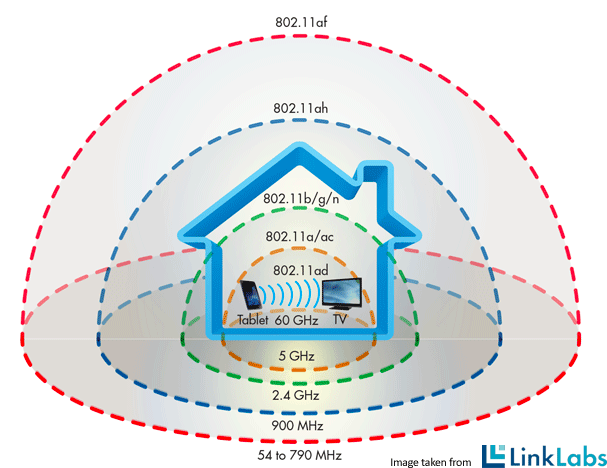M2M Insider: M2M and IoT News, Trends and Analysis
- Written by Bill Gerba
- Published: 14 January 2016
No.
Seriously, no.
At least, that's what the majority of editorials written about the 1st Response Pregnancy PRO test say so far. When the device was unveiled at CES last week, the big tech editorial sites let out a collective "huh?" while trying to understand who the market for an IoT device that you pee on might be. The website says the test is, "the first pregnancy test that syncs with your smartphone and provides access to an app that offers information and support personalized to you," and while I can certainly imagine some benefit of gleaning extra information about your cycle and body chemistry while trying to conceive, the test and its associated app seems to do less than many of the female reproductive health apps already on the market (though those don't come in a nice, pink box).

What it does do an excellent job of, though, is drawing attention to exactly how bizarre the Internet of Things field has grown in the past year. From devices that count the number of eggs in your fridge to the disturbing but obvious rise of the teledildonics field (yes, that's a word now), everything is connected to the cloud, gathering data, and promising you a new, more modern and more convenient lifestyle. And with the number of connected devices expected to rise from about 7 billion to over 20 billion in the next few years, I can't even imagine what strange and wonderful connected gadgets will be making headlines next.
- Written by Bill Gerba
- Published: 04 January 2016
Among the numerous problems with getting a network of connected "things" to talk with each other (and servers and services far away), connectivity is one of the biggest. While you can't walk down the street without being bombarded by wifi signals anymore, short-range, easily-blocked 2.4GHz wireless networking is poorly suited to the low-bandwith often geographically-dispersed nature of IoT installations. While we've come a long way from the first widely-used protocol, 802.11b, newer protocols like 802.11n and 802.11ac continue to use high-frequency signals that are easily blocked by walls, floors and ceilings and thus require lots of boosters and access points to ensure continuous coverage.
Enter 802.11ah, which I'm sure will soon be (stupidly) called "WiFi for Things." Using the same OFDM (Orthogonal, Frequency Division Multiplexing) technology that has let us cram lots of data into small slices of radio bandwidth for over a decade, 802.11ah will work inside the 900MHz frequency band commonly used for things like wireless telephones and baby monitors. Since the operating frequency is lower, 802.11ah will be able to penetrate walls and other barriers far better than it's 2.4 and 5GHz-based peers. Of course, this comes at the expense of overall bandwidth: 802.11ah is slotted to support "only" a few hundred Kbps to about 8Mbps -- more than enough for tiny sensors, but certainly not what you'll be using to beam your tablet's video to your TV. Link Labs actually has a great breakdown of how the various 802.11 standards work and what they are optimally used for, including this graphic:

While the standard was only just approved a few months ago, we've already seen some pre-production hardware that supports it, and surely more devices will come out this year and next to take advantage of its unique characteristics. 802.11ah competes with 900MHz z-wave wireless which has similar long-distance, low-bandwidth performance, but it's not an IEEE standard. In coming months we'll also start to see the production of 802.11af devices, which use the "white space" where analog TV signals used to live, to produce an even longer-distance and better-penetrating (albeit lower-bandwidth) network field. I've been petitioning the 802.11af working group to add an Easter egg that wraps the low-bandwidth communications to make them look like old episodes of "I Love Lucy" should you tune them in with an old analog TV. So far, they have not returned my calls.
- Written by Bill Gerba
- Published: 04 November 2015

I don't know Violet Blue, and trying to read her twitter feed leaves me more confused rather than less, but I do know this: when she wrote her recent article about "The coming smart-thing apocalypse", she missed a huge opportunity. I mean, obviously, it should have been The Coming of the Smart ThingPocalypse (TM), in the spirit of Sharknado and other portmanteaus that have come to define this part of our cultural history.
That aside, though, it was nice to read an article about securios IoT security implications in a "mainstream" online publication rather than some obscure IT journal or security-focused newsletter. There have certainly been plenty of IoT related hacks and messes covered by folks like Engadget and Gizmodo, but Blue's piece on the larger security implications of having everything connected to the Internet is interesting. Unlike so many others, Blue is quick to note that while the hacking of "things" is certainly already a reality, that's not the thing we should be worried about as more devices become connected:
Seriously, it's not "the hackers" I worry about. (Yes, I have tape over every camera and microphone in the house, but who doesn't these days?) No, what I worry about with things like WiFi thermostats and smart versions of boilers, locks, lamps, microwaves, dishwashers, dryers, outlets and smoke detectors is their software. And, like all things with software in them, a dev somewhere probably meant to send it for a code audit, or eliminate the hard-coded password, or file a patch, or tell comms that customers urgently need to update the firmware on their smart toilet. But ultimately they were distracted by the chance to eat a dozen tacos for $2.
Granted, there are some cases where we do need to worry about hackers. For example, popular electronic locks will have exploit kits published, sold to the highest bidder, and ultimately implemented on $0.99 apps. And of course there's a very real danger that critical infrastructure and industrial equipment may be hacked by true black hats bent on profit or just mayhem and destruction. But for the most part I expec that any ThingPocalypse -- should one actually happen -- is going to be more about lights that don't turn on, or maybe they turn the toaster oven off when they do, rather than a concerted effort by criminal masterminds to take control of your house and make your smart fridge show porn.

 Subscribe to the M2M Insider RSS feed
Subscribe to the M2M Insider RSS feed